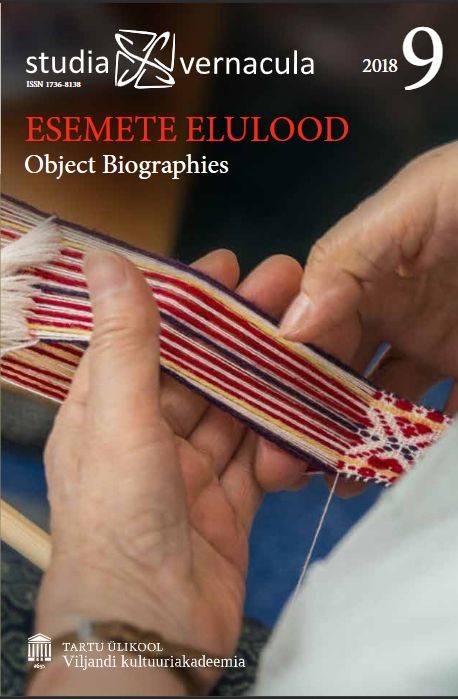Muhu vammuste lõikelistest eripäradest / Characteristics of the sewing patterns of Muhu overcoats
DOI:
https://doi.org/10.12697/sv.2018.9.150-165Abstract
As the song festival, our main event involving folk costumes, takes place in the summer, when outer garments are not particularly necessary, such garments have received relatively little interest from researchers as an everyday part of folk costume. In this article, I shall examine the characteristics of the patterns of women’s overcoats in Muhu, sharing information I came across when making an overcoat for myself, and when studying, measuring and describing the overcoats found in the collections of Estonian museums.
A total of 19 overcoats can be found in the collections of Estonian museums. The focus of this article is strictly on Muhu women’s overcoats. Outer garments have been covered before in various books on Estonian folk costumes, but the characteristics of the patterns of Muhu overcoats, including the side gussets, have not been studied in depth. Side gussets are triangular pieces of fabric located at the side seams of the front pieces of the overcoats. In most cases, the gusset is located at the hip or slightly lower; they tend to vary in size between coats (see Table 1). The museum items also included overcoats with gussets added to the shoulders and lower edges. Presumably, these pieces, which seem at first glance unnecessary, have been added for practical purposes.
Such overcoats were made for special occasions in the life of a girl or young woman, such as for confirmations and weddings. The overcoat was also worn on top of the sheepskin winter coat to keep the latter clean. As a rule, the textile overcoats found in museums were sheep brown originally and could later be coloured black with alder bark.
All the overcoats studied here were made in a similar way: they consist of four main pieces, with two-piece sleeves, differing only in their manner of sewing and decoration. The material used was hand-woven and fulled wool fabric. The process of wool fulling is long and complex; after textile mills emerged in Estonia, fabric was often taken there to be fulled. When the fabric was ready for sewing, it was narrow, just ca 60 centimetres wide. This meant that extreme care was needed in placing the pattern on the fabric so that as little of the fabric as possible would go to waste.
The neck would be V-shaped at the front and at the back, with a black or dark blue baize binding decorated with both a rolled hem in orange and by embroidery. The chest part would be decorated with square pieces made of an orange fine wool background with embroidered wool ornaments. The central back seam was similar in all the museum examples, employing an extremely interesting technological solution. The width of the seam varies along the length of the entire seam –wider at the waist (up to 7 cm) so as to shape the waistline, and much narrower at the bottom in order to increase the width of the coat.
The back pieces of all the overcoats came down longer than at the front, forming a gently sloping triangle at the central back seam. The lower edge of the overcoat was stitched with a couching stitch, and a coloured wool yarn finished off the closed hem. The coats were fastened with hooks at the front; a coloured ribbon, known locally as taht, located at chest-level could be used as an additional fastener.
The front pieces and gussets of all the women’s overcoats studied here were joined with a lapped seam. To understand why gussets are necessary, I decided to experiment with placing the patterns on the fabric. Figure 4 clearly shows that placing the patterns meant for the front and back pieces with the shoulder seams facing one other ensured that the fabric would be used as economically as possible. The shoulder seam of the back piece intersects with the side seam of the front piece, which results in triangular cut-outs at the sides.
Gussets are needed at the lower edges of the sides if the piece does not fit the width of the fabric and so the length of the lower edge needs increasing. Several pieces found in museums also have gussets at the shoulders: if the front and back pieces are placed very close to one other on a narrow piece of fabric, the side of the back piece intersects with the shoulder seam of the front piece. We can thus conclude that the gussets are a sign of a thrifty use of fabric which has been made into a decorative element by means of the stitching.
Keywords: overcoats, folk costumes, Muhu, patterns, cut-out

